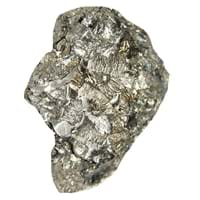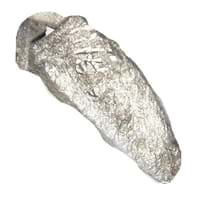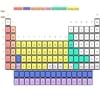Hafnium Europium Comparison
Periodic Table
Symbol
Hf
Eu
Group Number
4
14
Not Available
Period Number
6
6
Block
d block
f block
Element Family
Transition Metal
Lanthanide
CAS Number
7440586
30
7440531
34
Space Group Name
P63/mmc
Im_ 3m
Space Group Number
194.00
5
229.00
1
Facts
Interesting Facts
- Hafnium metal is highly reactive, hence not found free in nature.
- Hafnium metal as predicated after Mendeleev finished his periodic table.
Not Available
Sources
By-product Zirconium Refining
Found in Minerals, Mining, Ores of Minerals
History
Who Discovered
Dirk Coster and George de Hevesy
Eugène-Anatole Demarçay
Discovery
In 1922
In 1896
Abundance
Abundance In Universe
7 * 10-8 %
25
5 * 10-8 %
27
Abundance In Sun
~0.0000001 %
26
~0.00000005 %
27
Abundance In Meteorites
0.00 %
37
0.00 %
99+
Abundance In Earth's Crust
0.00 %
31
0.00 %
36
Abundance In Oceans
0.00 %
27
0.00 %
99+
Uses
Uses & Benefits
- It has an ability to absorb neutrons and hence it is used to make control rods in nuclear submarines. And this metal is also used in Plasma welding torches.
- It alloys with iron, titanium and niobium are very useful.
- Europium metals main uses is in the printing of euro banknotes. These notes glow red under UV light.
- It is used in low energy light bulbs.
Industrial Uses
Ammunition Industry
Chemical Industry
Medical Uses
NA
NA
Other Uses
Alloys, In Nuclear Reactors, Nuclear Research, Research Purposes
Alloys
Biological Properties
Toxicity
Toxic
Non Toxic
Present in Human Body
No
Yes
Physical Properties
Melting Point
2,150.00 °C
10
822.00 °C
99+
Boiling Point
5,400.00 °C
5
1,597.00 °C
99+
Appearance
Physical State
Solid
Solid
Color
Gray
Silvery White
Luster
Metallic
Lustrous
Hardness
Mohs Hardness
5.50
7
Not Available
Brinell Hardness
1,450.00 MPa
6
Not Available
Vickers Hardness
1,520.00 MPa
5
167.00 MPa
34
Speed of Sound
3,010.00 m/s
27
Not Available
Optical Properties
Allotropes
No
No
α Allotropes
Not Available
Not Available
β Allotropes
Not Available
Not Available
γ Allotropes
Not Available
Not Available
Chemical Properties
Chemical Formula
Hf
Eu
Isotopes
Known Isotopes
32
7
31
8
Electronegativity
Pauling Electronegativity
1.30
32
1.20
39
Sanderson Electronegativity
Not Available
1.01
22
Allred Rochow Electronegativity
1.23
25
Not Available
Allen Electronegativity
1.16
37
Not Available
Electropositivity
Pauling Electropositivity
2.70
22
Not Available
Ionization Energies
1st Energy Level
658.50 kJ/mol
40
547.10 kJ/mol
99+
2nd Energy Level
1,440.00 kJ/mol
99+
1,085.00 kJ/mol
99+
3rd Energy Level
2,250.00 kJ/mol
99+
2,404.00 kJ/mol
99+
4th Energy Level
3,216.00 kJ/mol
99+
4,120.00 kJ/mol
33
Electrochemical Equivalent
1.66 g/amp-hr
99+
1.89 g/amp-hr
33
Electron Work Function
3.90 eV
27
2.50 eV
99+
Other Chemical Properties
Anti Corrosion, Ionization, Radioactive Isotopes, Solubility
Ionization, Radioactive Isotopes, Solubility
Atomic Properties
Atomic Number
72
99+
63
99+
Electron Configuration
[Xe] 4f14 5d2 6s2
[Xe] 4f7 6s2
Crystal Structure
Hexagonal Close Packed (HCP)
Body Centered Cubic (BCC)
Crystal Lattice
BCC-Crystal-Structure-.jpg#100
BCC-Crystal-Structure-.jpg#100
Atom
Number of Protons
72
99+
63
99+
Number of Neutrons
106
29
89
38
Number of Electrons
72
99+
63
99+
Radius of an Atom
Atomic Radius
159.00 pm
28
180.00 pm
14
Covalent Radius
175.00 pm
23
198.00 pm
13
Van der Waals Radius
200.00 pm
28
233.00 pm
18
Atomic Weight
178.49 amu
39
151.96 amu
99+
Atomic Volume
13.60 cm3/mol
38
28.90 cm3/mol
8
Adjacent Atomic Numbers
Valence Electron Potential
81.00 (-eV)
16
45.60 (-eV)
35
Lattice Constant
319.64 pm
99+
458.10 pm
17
Lattice Angles
π/2, π/2, 2 π/3
π/2, π/2, π/2
Lattice C/A Ratio
1.58
12
Not Available
Mechanical Properties
Density
Density At Room Temperature
13.31 g/cm3
26
5.26 g/cm3
99+
Density When Liquid (at m.p.)
12.00 g/cm3
12
5.13 g/cm3
99+
Tensile Strength
445.00 MPa
8
120.00 MPa
15
Viscosity
Not Available
Not Available
Vapor Pressure
Vapor Pressure at 1000 K
Not Available
19.40 (Pa)
4
Vapor Pressure at 2000 K
0.00 (Pa)
24
Not Available
Elasticity properties
Shear Modulus
30.00 GPa
23
7.90 GPa
99+
Bulk Modulus
110.00 GPa
15
8.30 GPa
99+
Young's Modulus
78.00 GPa
25
18.20 GPa
99+
Poisson Ratio
0.37
7
0.15
34
Other Mechanical Properties
Ductile, Malleable
Ductile
Magnetic Properties
Magnetic Characteristics
Specific Gravity
13.31
18
5.24
99+
Magnetic Ordering
Paramagnetic
Paramagnetic
Electrical Properties
Electrical Property
Conductor
Conductor
Resistivity
331.00 nΩ·m
14
0.90 nΩ·m
99+
Electrical Conductivity
0.03 106/cm Ω
39
0.01 106/cm Ω
99+
Electron Affinity
0.00 kJ/mol
40
50.00 kJ/mol
21
Thermal Properties
Specific Heat
0.14 J/(kg K)
37
0.18 J/(kg K)
33
Molar Heat Capacity
25.73 J/mol·K
36
27.66 J/mol·K
16
Thermal Conductivity
23.00 W/m·K
99+
13.90 W/m·K
99+
Critical Temperature
Not Available
Not Available
Thermal Expansion
5.90 µm/(m·K)
99+
35.00 µm/(m·K)
8
Enthalpy
Enthalpy of Vaporization
661.10 kJ/mol
5
143.50 kJ/mol
99+
Enthalpy of Fusion
25.10 kJ/mol
8
9.21 kJ/mol
37
Enthalpy of Atomization
703.00 kJ/mol
5
180.00 kJ/mol
99+
Standard Molar Entropy
43.60 J/mol.K
34
77.80 J/mol.K
4
|
||
|
||
|












